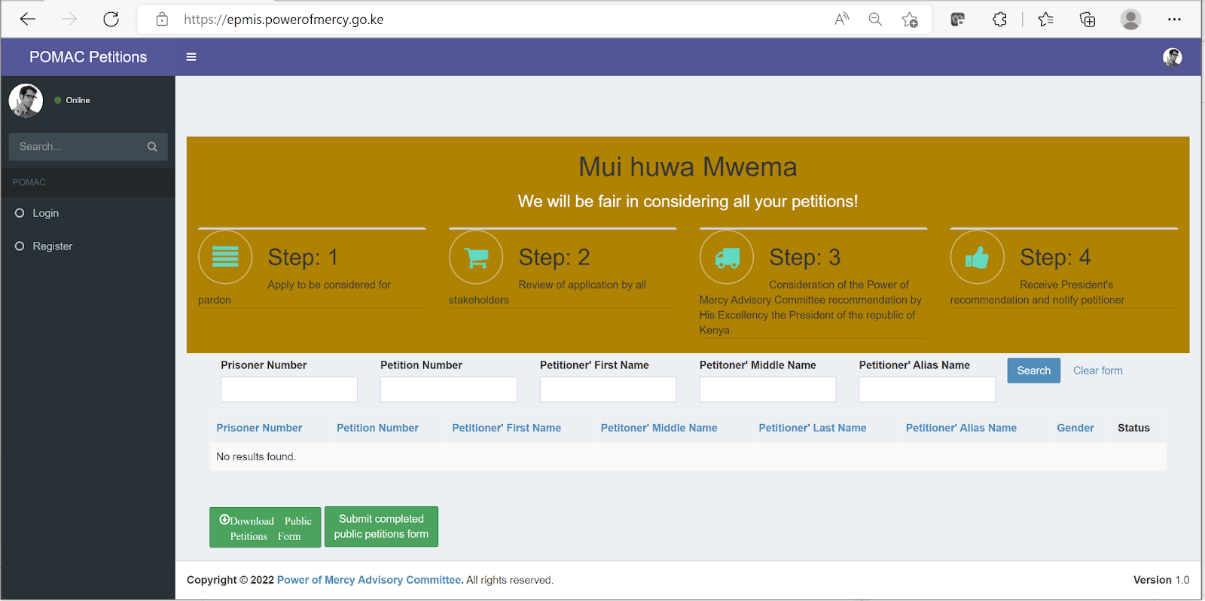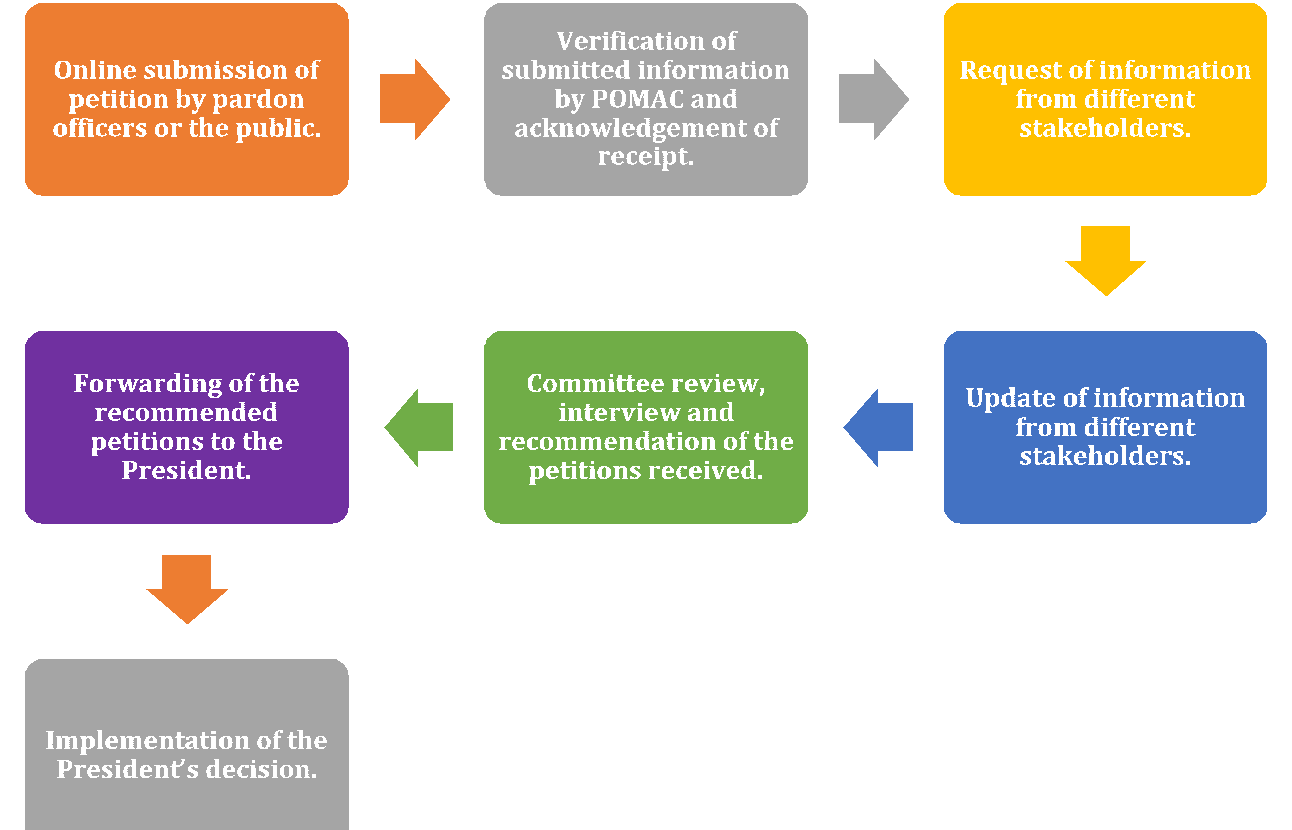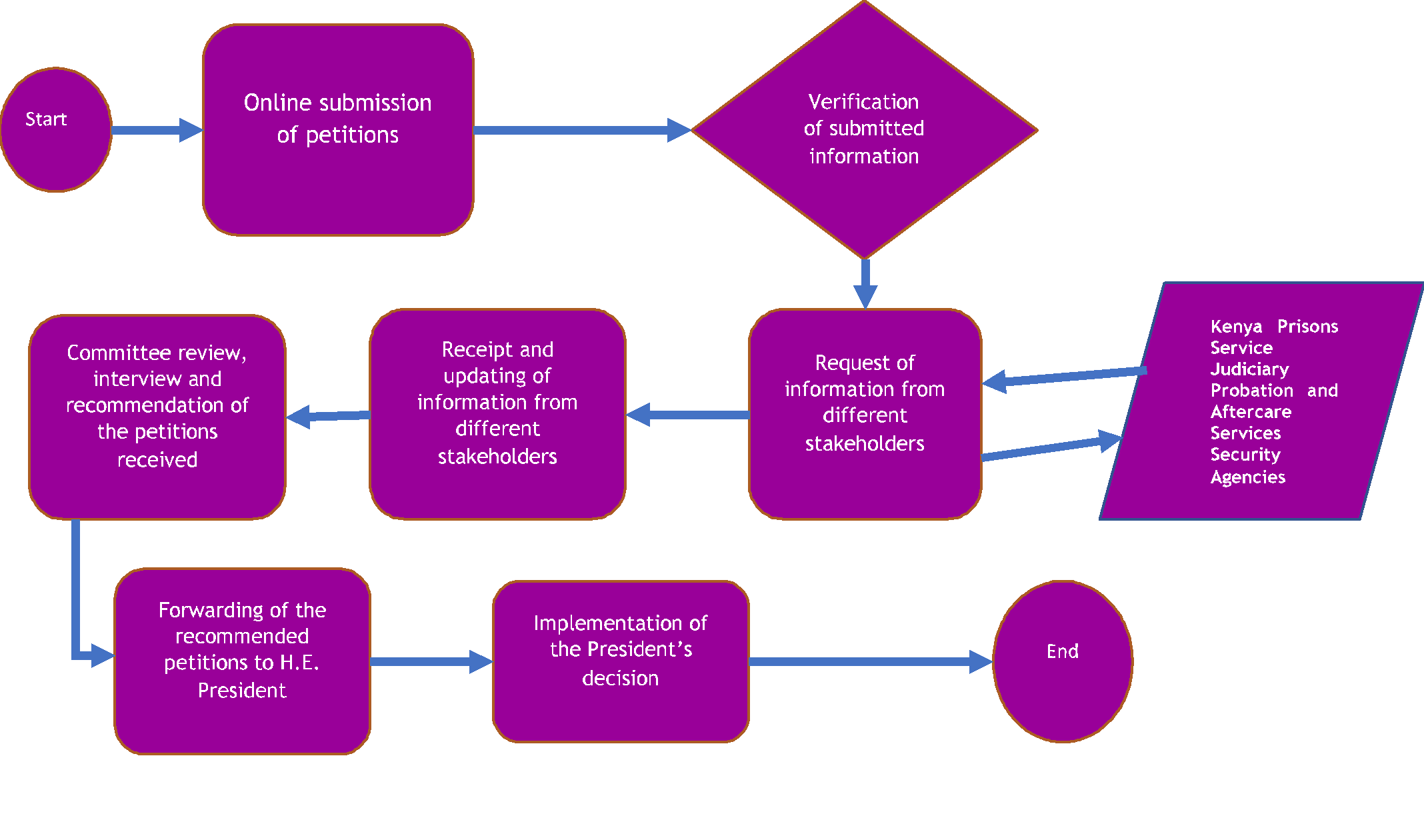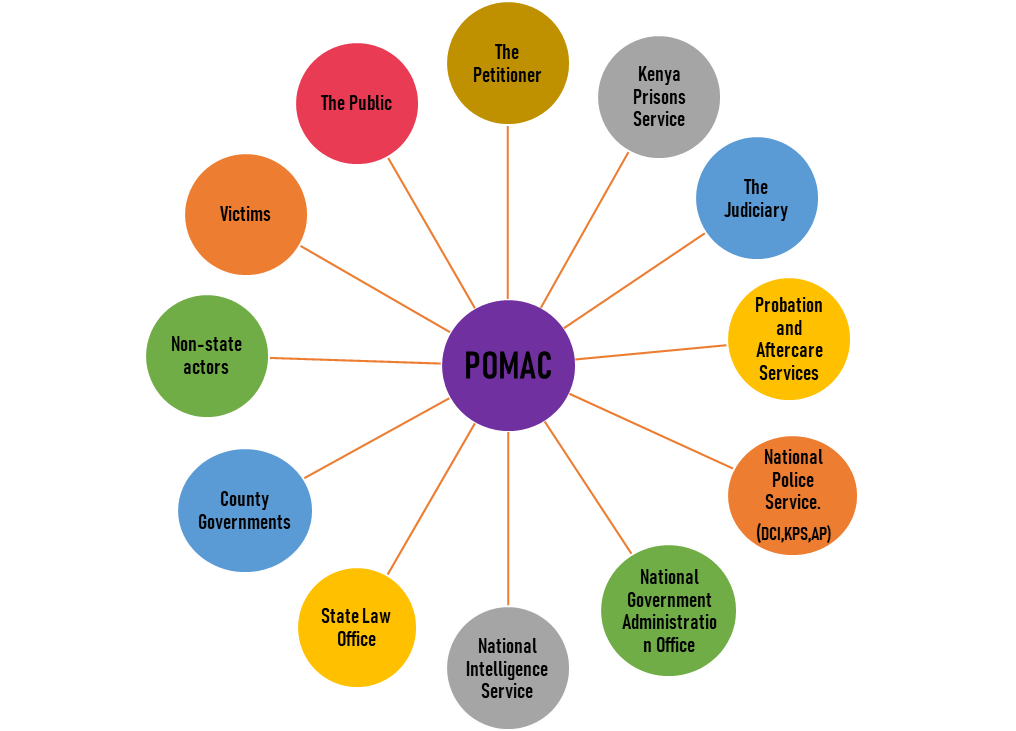FAQs
Power of Mercy means the exercise by the President of the powers granted under Article 133 of the Constitution.
POMAC is the advisory Committee on the power of Mercy established pursuant to Article 133(2) of the Constitution.
The Committee comprises of nine (9) members: the Attorney General who is the Chairperson, The Cabinet Secretary responsible for correctional services, and seven (7) other members who possess diverse professional expertise, skills and knowledge and are competitively selected by a special panel constituted by His Excellency the President.
The President in accordance with the advice of the Committee may:
- Grant a free or conditional pardon to a convicted prisoner.
- Postpone the carrying out of a punishment
- Substitute a less severe punishment
- Remit all or part of a punishment
Any person who is a convicted prisoner and is not serving a non-custodial sentence and/ or having a pending court process can apply for a pardon.
The petitioner must have served at least 1/3 of the sentence. Those on life or death sentence must have served at least (5) years.
A petitioner may apply individually or through an agent and/or advocate in writing or electronically to POMAC.
In assessing a petitioner, the Committee considers amongst others: age of the convicted criminal prisoner, circumstances, nature and seriousness of the offence, period served as well as the personal circumstances of the offender. Other considerations include the interest of the State and community; post-conviction conduct and reports from Prison and Probation.
A victim is any person who individually or together with one or more persons suffered harm in the form of physical, mental or emotional injury, pecuniary loss or substantial violation of human rights as a result of the criminal activity of the person for whom power of mercy is petitioned or otherwise under consideration.
When the conviction is for a felony and where there was a victim, the victim is legally entitled to make representations to the Committee.
Any petitioner can appeal or re-petition but only once after rejection and on new grounds to His Excellency the President through the Committee.
ePMIS stands for electronic Petition Management Information System (ePMIS) which is an online system that automates the end-to-end petition process.
Convenient access to the petition process through the online platform.
Transparency in the process by facilitating online monitoring of the petition status.
Integration with stakeholders who provide input into the petitions process.
Efficient review of the petitions by committee members.
Enhanced access to data, analysis and reporting.
Click here to Access the ePMIS System
Once the petition application is received, the next steps are:-
- Verification of submitted information by POMAC and acknowledgement of receipt.
- Request for information from different stakeholders.
- Update of information from different stakeholders into the system.
- Committee review, interview and recommendation of the petitions received.
- Forwarding of the recommended petitions to the President.
- Implementation of the President’s decision.

From the homepage, one can track the status of a petition application by:



